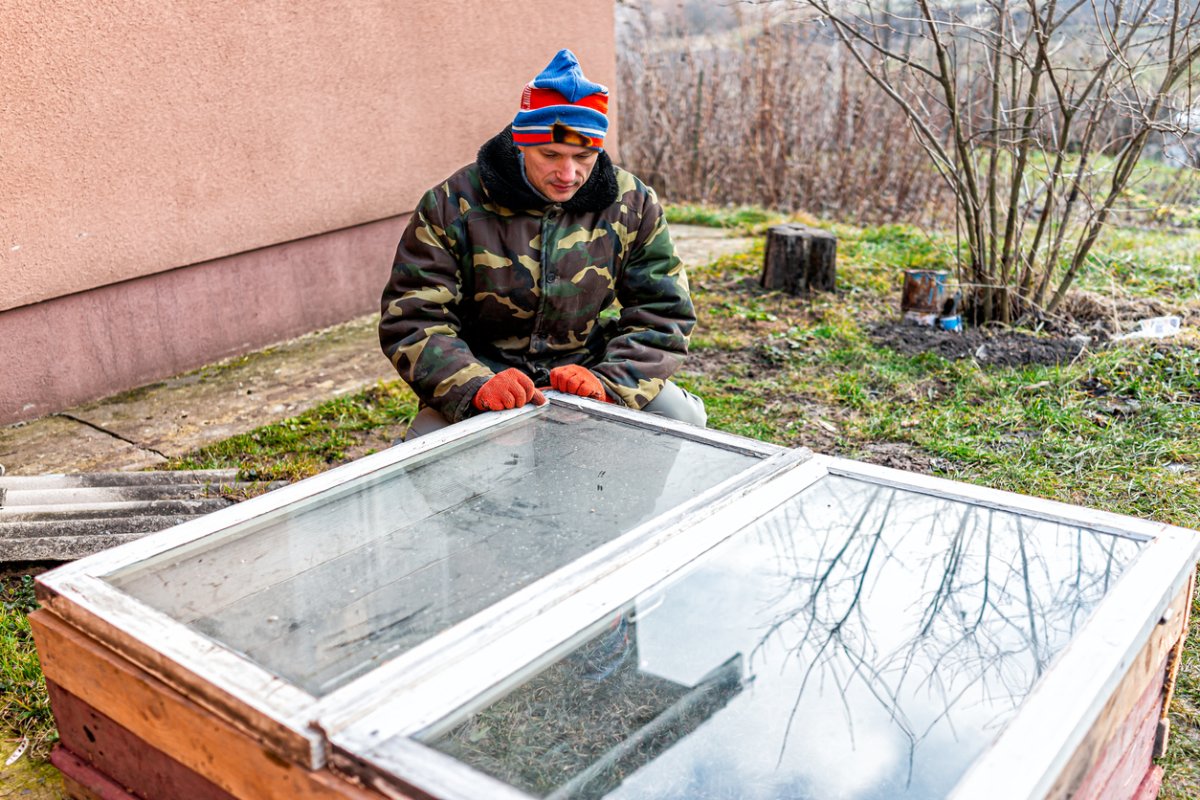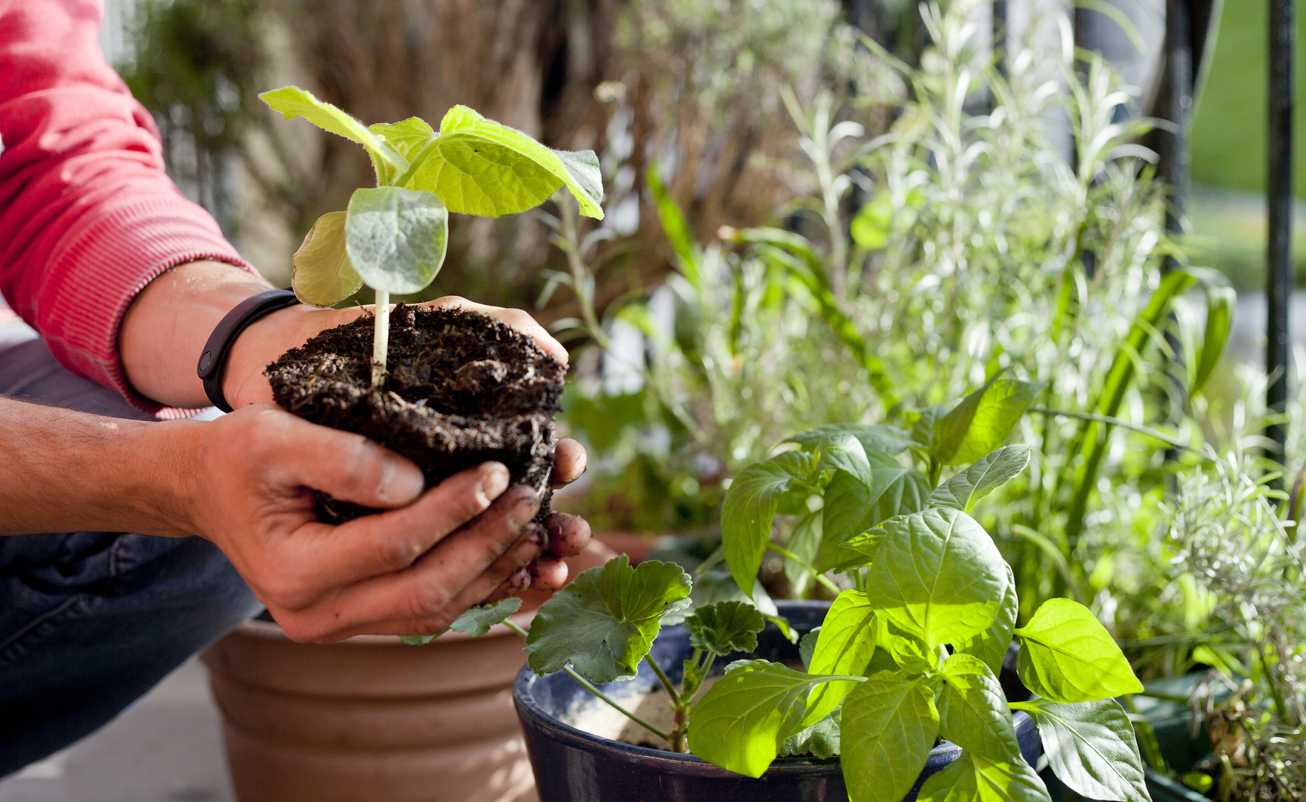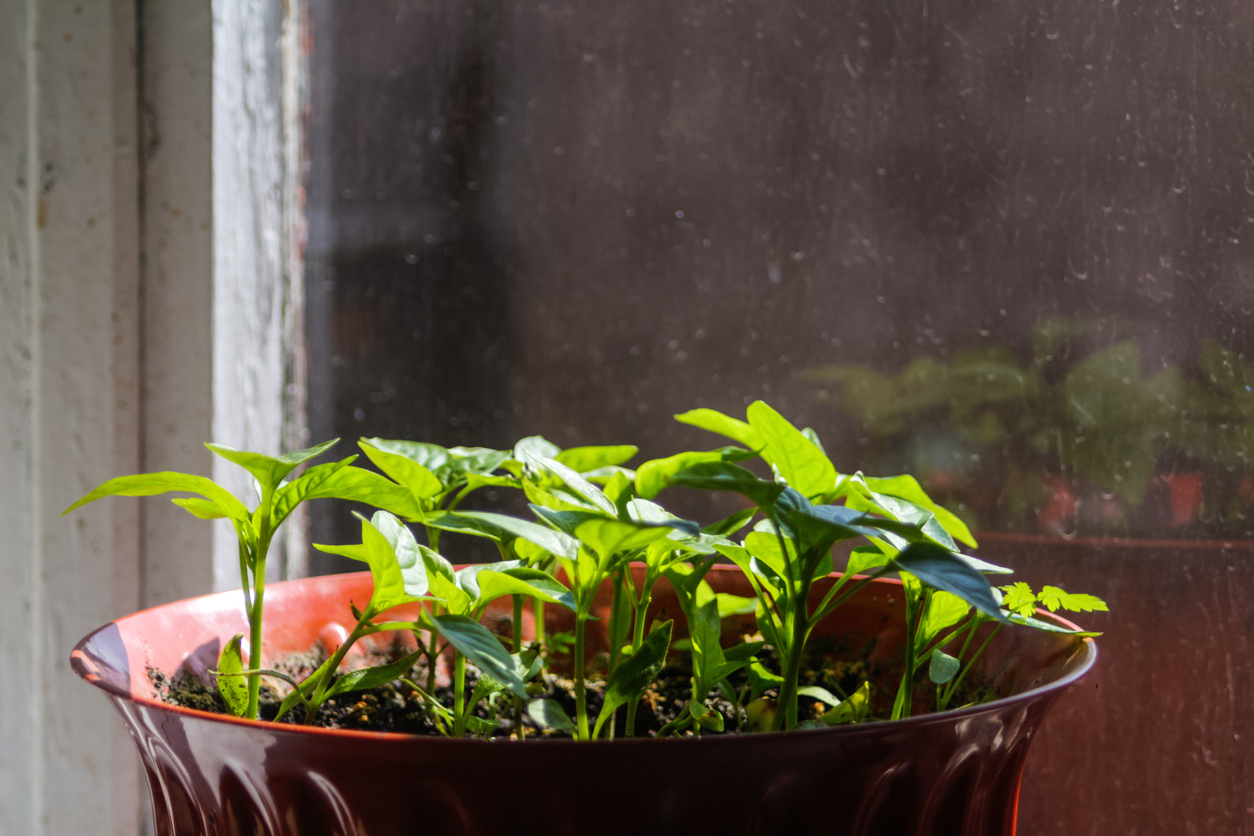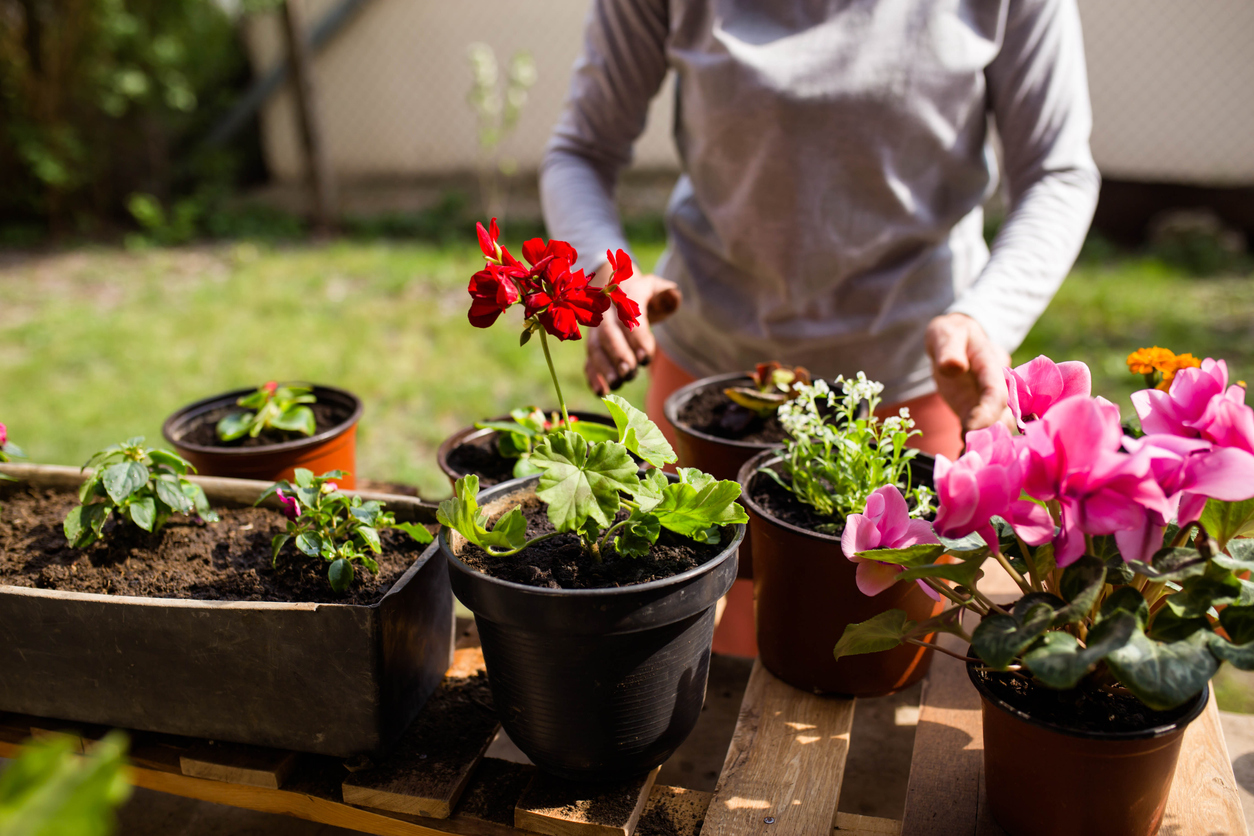

We may earn revenue from the products available on this page and participate in affiliate programs. Learn More ›
Winter hibernation isn’t just for bears. Nonhardy plants can hibernate—or overwinter—in sheltered places until spring. Overwintering means bringing tender plants that can’t survive freezing temperatures into an unheated garage or basement, a shed, a cold frame, or even your home for the winter, where they can stay safe and dormant until warm weather returns.
As spring approaches, it’s time to revive overwintered plants. The steps aren’t difficult, but timing is crucial. Awakening dormant plants too soon can result in leggy growth or even issues leading to the plant’s demise.
RELATED: 25 Lush Patio Plants for Your Outdoor Seating Area
1. Assess the plant’s health

Somewhere between late February and early April, depending on your growing zone (or about 4 to 6 weeks before the last frost date for some blooming plants), it’s time to revive overwintered plants—slowly. Building up to cold, sun, and wind exposure helps tender plants reacclimate to the outdoors.
Once temperatures are consistently above 40 to 50 degrees Fahrenheit, pull the dormant potted plants out of storage and evaluate their condition.
- Are there signs of new life?
- Does any of the old foliage need trimming?
- Are the pots clean and unbroken?
- Are the pots big enough?
- Are there any signs of pest infestation?
Bring the plant into a warm room that gets some filtered sunlight to encourage growth. It’s usually too early to put them directly outside at first, and this step helps ready the overwintered plants for their next trip outdoors.
RELATED: How to Help Your Houseplants Survive the Winter
2. Repot if necessary

If the pot is broken or the plant has outgrown its container, this is prime repotting time. If the plant is rootbound or you see roots growing out of the drainage hole, the plant needs a bigger pot.
It’s best to go up only one pot size, following these steps:
- Carefully remove the plant from its old pot.
- Gently detangle the roots to loosen them.
- Remove any damaged or mushy roots.
- Add new soil appropriate for the type of plant.
- Place the plant in the new pot and backfill with more soil.
- Tamp down.
- Water thoroughly.
If the plant doesn’t need a bigger pot, simply top-dress it by removing the top few inches of soil and replacing that with fresh soil.
RELATED: This $10 Tool Turned Me Into a Green Thumb—Seriously!
3. Add light gradually

Place the pot in a bright area out of direct sunlight, either indoors if still too cool outside, or in a sheltered outdoor space (often the north or east side of a building). Filtered light is best at first. Since dormant plants typically don’t receive any light, suddenly placing a dormant plant in full sun can result in burned leaves and stems.
To avoid sun damage, revive an overwintered plant by increasing its sun exposure gradually. Once it has spent some time in filtered light, give the plant an hour or two of direct sun from a window or in an outdoor spot. Take about a week of giving it slightly more sun each day until the plant appears ready for the light it receives in its usual location. If you acclimate an overwintered plant indoors with grow lights, follow similar steps; too much light exposure too soon might inhibit growth.
RELATED: What Is “Bright, Indirect Light,” Anyway?
4. Water plants as they break dormancy

When you see signs of new growth on the plant, it’s time to water. With the plants emerging from dormancy in a warmer, sunnier spot, they will increase their uptake of water to fuel growth. How much and how often to water depends on the type of plant, the type of soil, the size of the container, and the amount of heat and sunlight it receives.
This is also a good time to check the humidity. Most homes are dry when the furnace runs, so you might need to increase humidity for plants breaking dormancy inside. Although many succulents do fine in 10 percent humidity, most plants do best with 50 to 60 percent humidity. Tropical plants like as much as 90 percent humidity. Once new growth begins to appear, add a low dose of fertilizer.
RELATED: 11 Things You Didn’t Know That Houseplants Love
5. Acclimate to outdoor weather

Once new growth appears and the last frost has passed, you can harden off the plants to cold, sun, and wind in preparation for a return to full-time outdoor life by gradually increasing their exposure to conditions gradually.
To harden plants off, place them initially in an area protected from wind, rain, and full sun. If nighttime temperatures dip too low, you will need to bring the plant inside at night. Gradually, over the course of a few weeks, move the plant into areas where it will receive more sun, breeze, and nighttime temperatures for which it is suited.
